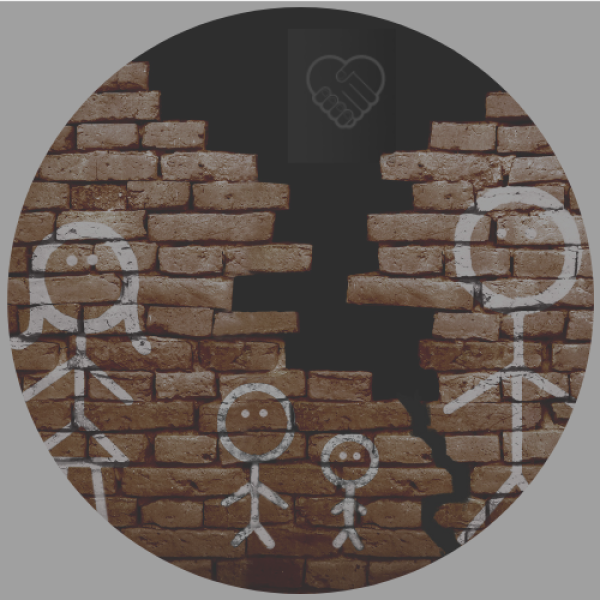Professionals in the child welfare system, such as case handlers, attorneys, social workers, and others are susceptible to high rates of secondary trauma due to high caseloads, a culture of overwork and going “above and beyond,” and a lack of dialogue about the impact of trauma exposure.
Why It Matters/Implications
In Philadelphia, community needs escalated in recent years, as has the strain placed on child welfare professionals (2). The surge in gun violence combined with shortages of nurses, teachers, and transportation and mental health services have adversely impacted communities and have increased involvement in other systems, like child welfare.
The child welfare workforce’s health and wellness is critical to individual workers and the families they serve. If unaddressed, the accumulation of chronic stress can impact in the following ways: physical and emotional health of workers. turnover and retention problems, quality of care for children and families.

-
Negative outcomes for families and children
Secondary-trauma stress symptoms may impact a child welfare worker’s ability to dedicate time and energy to all their cases, leading to more negative outcomes for families and children.
-
Turnover and retention problems
The child welfare system demands that workers provide services to a caseload of families, and workers may struggle to manage the quantity and intensity of cases. Research shows that caseworkers are less likely to express satisfaction and desire to stay in their jobs if they have severe caseloads, causing many child welfare organizations to struggle with turnover. (3)
-
Poor health for workers
When a worker feels chronic stress at work, their body jumps to respond to the stress. The stress response is both psychological and physiological, as the brain sends messages and creates body wide changes. Typically the body returns to normal levels (aka homeostasis) when the stress stimulus is removed. However for individuals in chronic stress or constant low level stress, such as child welfare workers, it can become difficult to return to homeostasis.
What Can Be Done
Sustainable, trauma-informed work requires care for the professional as well as the client. We often focus on the resilience of our clients, but professionals in the child welfare system also need to be resilient in the face of secondary trauma and work stress. By gaining skills to support our own resilience, workers can help their clients gain the same skills and heal from trauma. Best strategies include a combination of individual, organizational, and systemic strategies, such as:
- Acknowledge the prevalence of secondary traumatic stress and take it seriously as an occupational hazard.
- Reframe “wellbeing” as an ethical imperative and part of professional ethics and best practice.
- Set boundaries with clients, co-workers, and yourself.
- Build in supports at individual, organizational, and systemic level → think beyond “self-care” and build in supports for the workforce.
The Support Center for Child Advocates is proud to offer, Child Advocates Online, our online training center. Child Advocates Online is a library of online courses, resources, and educational materials geared towards professionals working in the child welfare system.
This handout presents an overview of the literature on Secondary Traumatic Stress (STS) in the child welfare workforce, identifying common sources and symptoms of STS and suggestions for workers and agencies to help prevent and address it.
Offers guidance to help those working with youth involved in multiple systems (YIMS) and their families to use a traumatic stress perspective and provide trauma-informed care. This resource guide uses two case vignettes throughout to illustrate the concepts within. It describes what trauma and recovery might look like for YIMS, trauma-informed practices that could be beneficial, using trauma-informed screening and assessment with YIMS, engaging in trauma-infromed case planning and intervention, and managing secondary traumatic stress for providers.
Citations for Child Welfare
(1) Rienks SL. An exploration of child welfare caseworkers' experience of secondary trauma and strategies for coping. Child Abuse Negl. 2020 Dec;110(Pt 3):104355. doi: 10.1016/j.chiabu.2020.104355. Epub 2020 Jan 14. PMID: 31948676.
https://pubmed.ncbi.nlm.nih.gov/31948676/
(2) Volk, S., & Christie, J. (2022, November 3). Crushing caseloads and low wages drive out foster care workers, but children pay the price.
https://www.inquirer.com/news/philadelphia-foster-care-caseloads-worker-turnover-dhs-hope-jones-20221103.html
(3) Brianne H. Kothari, Kelly D. Chandler, Andrew Waugh, Kara K. McElvaine, Jamie Jaramillo, Shannon Lipscomb, Retention of child welfare caseworkers: The role of case severity and workplace resources, Children and Youth Services Review, Volume 126,2021, 106039, ISSN 0190-7409.
https://doi.org/10.1016/j.childyouth.2021.106039
Acknowledgement
With thanks to the Support Center for Child Advocates (Child Advocates), Center for Excellence in Advocacy for this page content.
Child Advocates provides legal and social service advocacy to children and youth who have experienced child abuse and neglect with the goal of securing safety, justice, well-being and a permanent, nurturing environment for every child. Their training department, the Center for Excellence in Advocacy, aims to improve outcomes for children and families, especially those involved in the child welfare and juvenile justice systems, by improving the practice of those who work with them.
This project was supported by PCCD Subgrant #36804 awarded by the Pennsylvania Commission on Crime and Delinquency (PCCD).. The opinions, findings and conclusions expressed within this publication/program/exhibition are those of the author(s) and do not necessarily reflect the views of PCCD.



